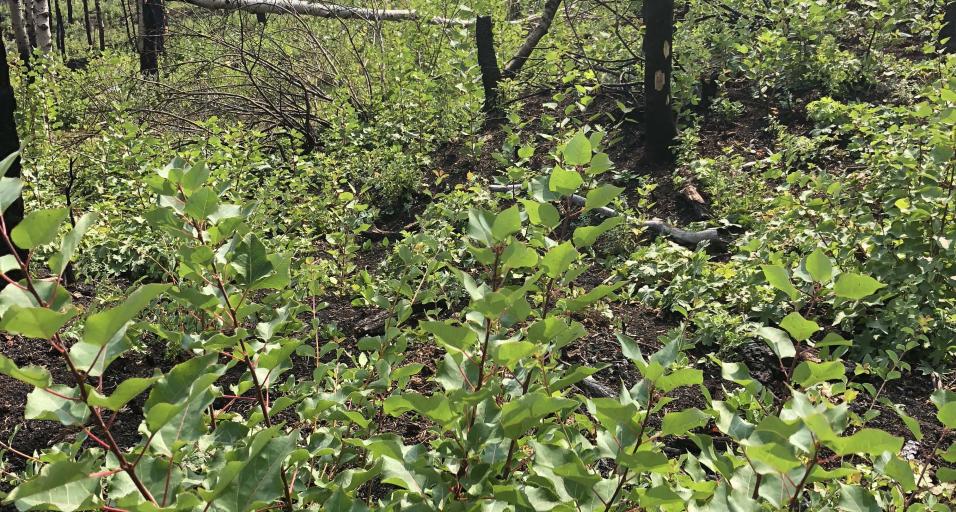In June, the Wyoming Game and Fish Department partnered with fire managers from the BLM and Forest Service to conduct a prescribed burn in Burdick Draw on the east slope of the Wyoming Range near LaBarge. The prescribed burn was conducted to mimic wildfires that historically burned all across the West, but have largely been suppressed over the past century. Without disturbance, such as fire, conifer trees will eventually overtake aspen trees, which are quite valuable to many different species of wildlife. It is estimated that we have lost nearly half of the aspen stands across West due to fire suppression.
Pinedale Habitat Biologist Jill Randall recently went back to the Burdick Aspen Project to see what it looks like after the burn in mid-June. The top photo shows the excellent response of aspen and forbs just weeks after the fire. "There were many fresh aspen suckers already two to three feet tall and a few almost four feet," said Randall. "This is exceptional for a year with very little growing season moisture. The geranium, lupine, snowberry, and aspen are already providing great forage opportunities for mule deer and many other species of wildlife in the area."
Since 2014, some 11,600 acres of sagebrush have been enhanced, 2,900 acres of aspen have been mechanically treated, 900 acres of aspen have been prescribed burned and over 12,000 acres of cheatgrass have been treated.
Since 2010, the Wyoming Game and Fish Department has worked collaboratively with the public to develop the Wyoming Range Mule Deer Initiative. Implementing these habitat enhancements on public land was a significant component of the plan, designed to guide management of the Wyoming Range mule deer herd.

